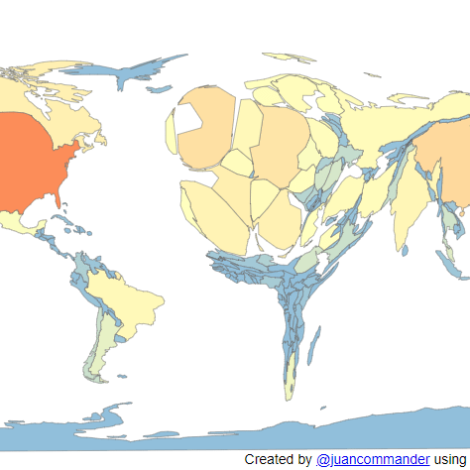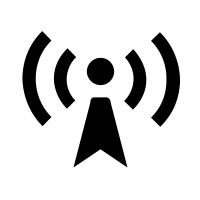Despite the expansion of global Internet coverage and open access journals, research from outside of the United States and Europe is underrepresented. To illustrate this, the map above shows the world scaled to the number of articles in the Web of Science database by authors living there.
It is evident that there is significantly less available online research from Latin America and Africa, despite substantial research conducted through universities in these areas. Barriers include paywalls for articles from the United States and Europe and lack of translation between different languages. This is especially of concern for the field of global development, where research findings from universities in developing countries are not always transferred globally. In a time that encourages participatory and user-centered design, this seems to be a missed opportunity for local knowledge and solutions, as well as cross-communication between high and low- income countries to strengthen existing work on both sides.
In a time that encourages participatory and user-centered design, this seems to be a missed opportunity for local knowledge and solutions.
To increase inclusivity in the current system, there has been a push for “open science.” The term is loosely defined as science that can be disseminated and obtained by scientists anywhere. It was a concept that was prevalent this year at UNESCO’s 2018 International Tech4Dev Conference that I attended in Lausanne, Switzerland. As demonstrated at the conference, people across the world have come up with varying solutions to help close this gap. African Journals Online (AJOL) is a scientific database that represents work from 32 African countries, with the goal of increasing the presence of African-published research papers on an international scale.
More localized, technology-based approaches include the development of individual maker-kits aimed to teach community members basic electrical and programming skills using a hands-on approach. Jaiksana José founded O-Space Innovation Hub after a forced move to the South Sudan Rhino Camp refugee settlement in 2016. He was inspired to do the work when he noticed a lack of educational resources and access to power and Internet connection. To promote technology and ICT education in these areas, he designed the #ASKotec, an open hardware kit with hands-on activities to engage and teach local community members. Pilot study results showed success in acceptance and the kit’s ability to educate users.
There must be recognition and a push for change from countries that are the most represented.
Although these are just two examples of open science programs, similar initiatives have been taken across the Global South. To achieve the goals of equal participation and recognition in global development research, there must be recognition and a push for change from countries that are the most represented. The open science movement supports the democratization of scientific knowledge and can continue to grow through the efforts of researchers in both the global North and South.
About the Author
Jennifer Ventrella is a Master’s student of Mechanical Engineering and Applied Anthropology at Oregon State University in Corvallis, Oregon (USA).


Thank you for the article. What is the source of the map illustrated above? Could it be cited please.
Thank you.
It’s interesting, isn’t it. The source is written on the bottom of the image, but I see now that the bottom is cut off in the display above. It says “created by @juancommander. That’s a Twitter name where you can find the author.